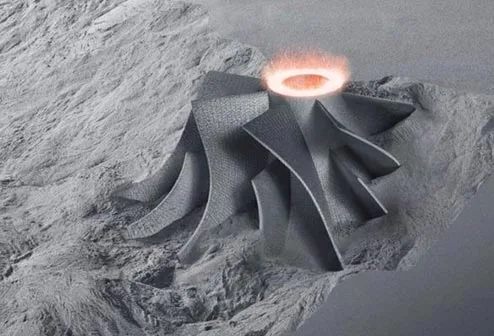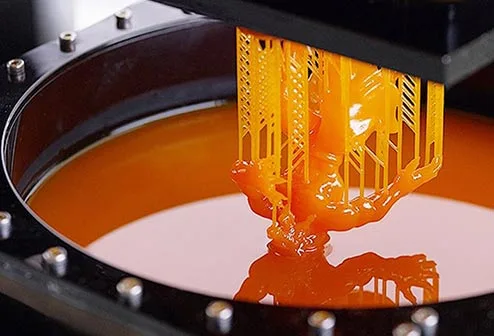You might have a great idea that leads you to launch a startup. But then you realize you can’t handle it all on your own. You need professional advice, help, and often financial resources. Finding the right partner early can make or break your initiative. Here are some tips to help you.
Initially, all you may need is some good advice and help to show you the best way to run your business. Start-up capital is often necessary so that you can develop your business model and product without financial stress. At this stage, your startup is a delicate plant that needs nurturing and care.
-640x360_tcm27-98896.jpg)
Startup incubator programs can be of great help in the early stages. An example of this is technology and incubators, which provide affordable premises, shared infrastructure, networking opportunities and access to early-stage investors. Be sure to check because in addition to general funding programs, there are also industry-specific incubators.
Once you gain confidence and validate your product, you can use so-called startup accelerators to take it to the next level and accelerate growth. Accelerators can give your company access to a variety of services, including mentorship, networking, legal advice and access to investors.
With his help, you can bring your ideas to life before committing to them. This saves you unnecessary expenses and wasted time. Accelerators pay for these services—usually in the form of shares in the company. For this reason alone, you should be thorough when looking for an accelerator and pay attention to whether and which startups in your business area have proven to help them succeed.
For a startup, funding is probably the most important resource. Funding for your business can come from a variety of sources: equity, loans from friends and family, grants, or crowdfunding. All types of financing have advantages and disadvantages that you must consider.
As a new player in the manufacturing industry, you will have greater financial needs and may need multiple backers to support you at various stages.
This is where angel investors and venture capitalists (also known as venture capitalists or simply VC donors) come into play. Maybe you met through an accelerator platform, or you targeted these financiers, or discovered them on a platform like LinkedIn.
Cooperation must be beneficial to both parties. You need money, and investors expect high returns. They need to be prepared to come up with a compelling business idea and figure out how to make money - which often includes equity investment and a clear exit strategy.
Generally speaking, venture capital investors prefer companies that can scale quickly and have completed an initial validation process.
However, this also means that high-risk investors will drive rapid growth and may require riskier strategies. On the other hand, if you're looking for slow organic growth, this may not be a good fit for you. Don’t go to the first investor you come across, but look for capital providers who are willing to support you and your team. Check if the investor has experience launching startups in manufacturing and your market. What achievements has he made? Ask yourself whether your ROI expectations and goals are consistent with those of your investors.
-640x360_tcm27-98895.jpg)
One of the biggest potential barriers new businesses face is entering markets and consumers. The latter in particular often represents the unknown.
One way to solve this problem is to partner with a larger company, such as another manufacturer or distributor. The benefits of a start-up are obvious: it has access to markets, technology and equipment, as well as potentially access to capital and expertise that does not exist within its own company.
Big businesses are also benefiting, reflected in the number of venture capital units or companies they create. You have to innovate to stay ahead of the competition. They also need to be part of the change, otherwise it could drive them out of the market. Almost every company will tell you that they are looking for innovative "thinkers," talented individuals and independent thinkers. However, existing organizational structures are often restrictive, resulting in R&D and innovation being outsourced.
At first glance, this may seem like a heavenly partnership, but in reality there are many pitfalls. This includes, inter alia, different corporate cultures: one partner is agile and wants to progress quickly, while the other partner is more cautious and does not take risks that are not thoroughly analyzed beforehand. As a start-up, you need to make sure you choose the right company for this partnership. Not only do you need the full support of senior management, but you also need the support of the people you work with. You also want to avoid being forced into a very specific role or area of business.
If you have the right company and the right attitude, a corporate partnership can bring benefits to both parties. That’s why it’s so important to think it through before signing a contract and make sure both parties understand exactly what is expected of each other. According to McKinsey research, most companies stop investing in startups after two or three years. Only 28% of the startups surveyed were satisfied with the partnership.
As a manufacturing startup, you need to ensure you have a strong supply chain in place. This is important for on-time delivery of CNC machined parts, but also gives you access to expertise not available in-house.
Before other companies will be interested in you and invest in you, you must prove that your idea works. To do this, you need prototypes that can be shown in demos, trade shows, etc. These prototypes need to be tested not only for shape and fit, but also for possible test markets. Venture investors are particularly critical in this regard.
Of course, you need to get a prototype as soon as possible. Also remember that you should incorporate the feedback you receive into your design, if necessary. This also affects the manufacturability of the chosen manufacturing process. Ultimately, you need a product that you can make cheaply and sell at a sufficient profit.
You may not have all the expertise required to do this. Your supplier is a good point of contact if you have any questions.
For example, we at Richconn can help at the critical stage between design and production. We can deliver prototypes in a very short time, sometimes as little as a day after you upload your CAD model to us.
The test is free and can be done as many times as needed before ordering production. If necessary, you can also speak with an expert who understands your chosen manufacturing technology. Our experts are well-versed in injection molding, 3D printing services, and CNC machining services.
If you wish, you can outsource all production to us in the early stages of your business to defer significant investments in equipment and conduct more comprehensive product validation before deploying start-up capital.
As a start-up, you need all the help you can get. They won’t be experts in everything, and they may need seed capital to get everything going. With the right partner, you can overcome early difficulties and make your plan a success. If you can do this, these partners will help you build a business they can be proud of.
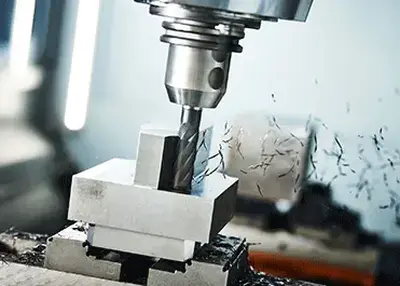 Exploring the World of High-Speed MachiningNovember 22, 2023In the ever-evolving landscape of manufacturing, the pursuit of efficiency and precision has led us to the realm of High-Speed Machining (HSM).view
Exploring the World of High-Speed MachiningNovember 22, 2023In the ever-evolving landscape of manufacturing, the pursuit of efficiency and precision has led us to the realm of High-Speed Machining (HSM).view CNC Machined Bottle Openers: Elevating Craftsmanship with Richconn PrecisionNovember 14, 2023Welcome to the realm where precision meets innovation – Richconn's CNC machined bottle openers redefine the art of craftsmanship. As a leading CNC machining service provider, Richconn is committed to delivering not just bottle openers, but a symphony of precision, design excellence, and user satisfaction.view
CNC Machined Bottle Openers: Elevating Craftsmanship with Richconn PrecisionNovember 14, 2023Welcome to the realm where precision meets innovation – Richconn's CNC machined bottle openers redefine the art of craftsmanship. As a leading CNC machining service provider, Richconn is committed to delivering not just bottle openers, but a symphony of precision, design excellence, and user satisfaction.view Carbon Steel: The Ultimate Guide - Types, Properties & PriceSeptember 8, 2023Carbon steel is one of the most common types of steel, as it is cheap, abundant, and versatile. Carbon steel found in countless products and structures, plays an indispensable role in various industri...view
Carbon Steel: The Ultimate Guide - Types, Properties & PriceSeptember 8, 2023Carbon steel is one of the most common types of steel, as it is cheap, abundant, and versatile. Carbon steel found in countless products and structures, plays an indispensable role in various industri...view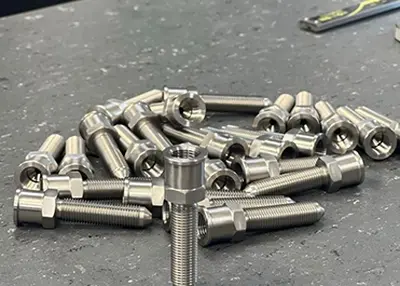 How Much Do You Know About Stainless Steel Knowledge?October 23, 2023Steel, is a generic term for iron-carbon alloys that contain between 0.02% and 2.11% carbon. When the carbon content is greater than 2.11%, it is referred to as pure iron. The chemical composition of steel can vary greatly, and steel containing only carbon is known as carbon or plain steel.view
How Much Do You Know About Stainless Steel Knowledge?October 23, 2023Steel, is a generic term for iron-carbon alloys that contain between 0.02% and 2.11% carbon. When the carbon content is greater than 2.11%, it is referred to as pure iron. The chemical composition of steel can vary greatly, and steel containing only carbon is known as carbon or plain steel.view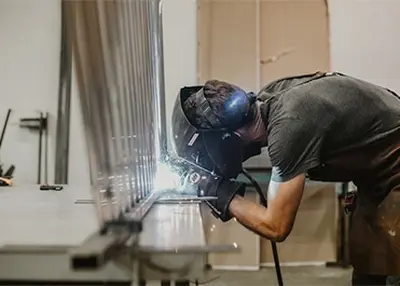 Tig vs Mig Welding: Choosing Between Two Great WeldingNovember 16, 2023When comparing MIG and TIG welding, it is important to consider the factors involved, the pros and cons they have, and the applications they are suitable for.view
Tig vs Mig Welding: Choosing Between Two Great WeldingNovember 16, 2023When comparing MIG and TIG welding, it is important to consider the factors involved, the pros and cons they have, and the applications they are suitable for.view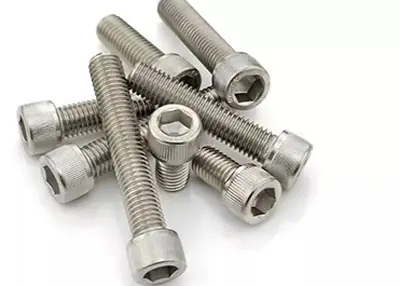 The Basics For the Right ThreadOctober 16, 2023At Richconn, you can easily add threaded holes to your CNC machined parts. Adding by turning gives you many additional threading options. There are two types when it comes to threading: Internal threads and external threads.view
The Basics For the Right ThreadOctober 16, 2023At Richconn, you can easily add threaded holes to your CNC machined parts. Adding by turning gives you many additional threading options. There are two types when it comes to threading: Internal threads and external threads.view
 EN
EN
 ru
ru 

